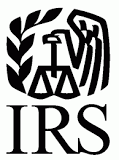The Supreme Court made it easier for plaintiffs to bring ERISA prohibited transaction claims last month when it unanimously adopted a lower pleading threshold for plaintiffs making such claims. Effectively, the Court’s decision in Cunningham v. Cornell University allows participant plaintiffs to more easily withstand a plan sponsor’s motion to dismiss, potentially opening the door to increased litigation targeting ERISA plans for common transactions with service providers. This is expected to result in more costly and time-consuming litigation, even in cases that do not ultimately have merit.
Key Holdings
The Court’s central holding establishes that plaintiffs alleging prohibited transactions under ERISA are not required to address statutory exemptions to such transactions in their complaints. Instead, the responsibility to invoke and ultimately prove these exemptions now rests squarely with plan sponsors and fiduciaries as affirmative defenses.
For example, under ERISA a plan sponsor who engages and pays service providers (such as recordkeepers and investment managers) engages in a prohibited transaction. Congress understandably also created an exemption to the prohibited transaction rules for payment of reasonable compensation to necessary service providers. The Court held that the structure of the statute, which places the prohibitions in one section and the exemptions in another, suggests that Congress intended for the exemptions to function as limitations on the prohibitions, rather than as integral elements of the prohibited transactions themselves. Thus, plaintiffs do not have an obligation to address the exemptions—rather, it is the defendant’s obligation to raise and demonstrate that an exemption applies.
Implications for Future Prohibited Transaction Litigation
This ruling may lead to an increase in ERISA litigation, as more claims survive initial dismissal motions, resulting in costly discovery and ongoing litigation, even in cases that appear to fall squarely under the ERISA prohibited transaction exemptions. As a result, more defendants may consider settling even meritless claims. The Court recognized these concerns but ultimately concluded that they could not override the clear statutory text and the established framework of ERISA. The Court suggested that trial courts utilize several existing procedural tools to mitigate the risk of meritless claims, but it remains to be seen how trial courts will approach the issue.
Practical Considerations for Plan Sponsors
Given the heightened litigation risk, there are several actions plan sponsors should take to anticipate potential challenges and ensure robust fiduciary practices are in place to withstand scrutiny.
1. Review Service Provider Agreements: Ensure that compensation paid to plan service providers from plan assets is reasonable. It is also advisable to maintain documentation demonstrating the necessity of the services provided and the reasonableness of the compensation paid for those services.
2. Document Fiduciary Processes: Maintain thorough records of decision-making processes related to plan management to provide evidence of prudent fiduciary conduct, particularly with respect to the selection, retention, and ongoing monitoring of service providers.
3. Stay Informed on Legal Developments: Keep abreast of evolving ERISA litigation trends and consider consulting legal counsel to assess and mitigate potential risks.
This decision underscores the importance of proactive fiduciary oversight and may signal increased judicial scrutiny of retirement plan management practices. If you would like to improve your fiduciary governance or assess how to better protect yourself from ERISA litigation, please do not hesitate to reach out to one of our experienced attorneys.

